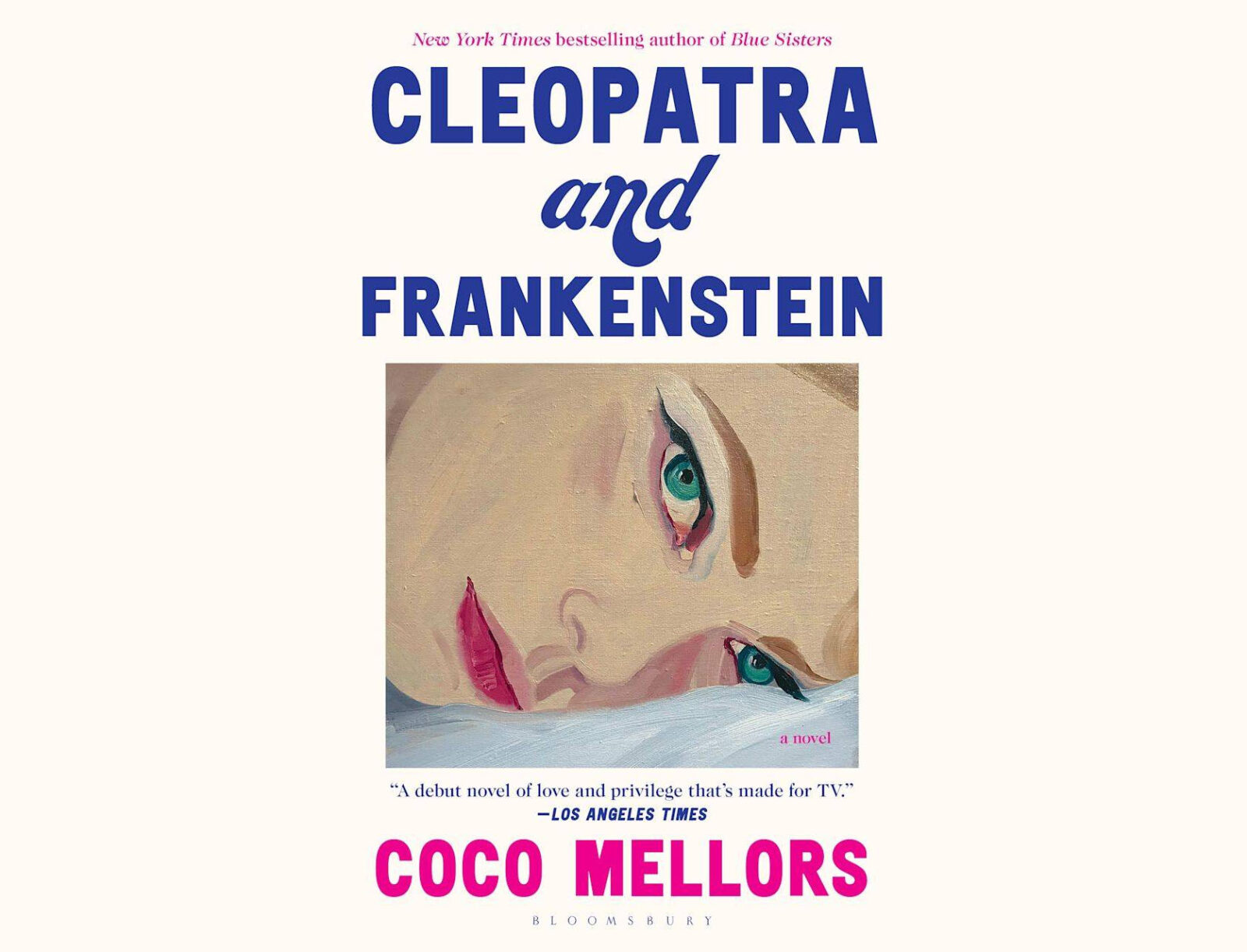Can we please talk more about Coco Mellors?

Coco Mellors writes like someone who understands chaos from the inside out. British-born and raised in London as the youngest of four siblings, she moved to New York at 15. In the city, she earned her MFA from New York University, then moved to LA while doubling as a fashion copywriter and author. In 2022, she wrote “Cleopatra and Frankenstein,” which first began as an exercise in her MFA program. She depicted a disastrous honeymoon scene instead of the expected blissful romance. After her first book’s success, she wrote “Blue Sisters” in 2024, while still working full-time, because, in her words to Harper’s Bazaar India, “In order to write, I have to live and have experiences… or I need to make money.”
Beautiful characters with manic inner voices
Her personal history forms the undercurrent of her fiction. Mellors is open about being sober since she was 26, and recounts how she comes from what she openly describes as a “family of addicts and alcoholics. Almost all of whom are sober as well,” she told The Guardian. “I’m also interested in sobriety in families and how that can get passed down through generations. What does it look like to be long-term sober but still self-destructive? What does it look like to be newly sober and starting to heal?” Drawing from lived experience, Mellors’ fascination with how this pain imprints itself across generations, not theoretically, but in a very real way.
As a result, the author’s sensibility is a little dark, very stylish, and always intimate. She seems to fall under that genre of beautiful female characters and their manic inner voices. Think Ottessa Moshfegh’s “My Year of Rest and Relaxation” or Dolly Alderton’s “Everything I Know About Love.” Amid such specific, self-aware fiction and unhinged protagonists, Mellors adds her own signature to the darkness with a sharp, humanizing warmth.
Perhaps I’m projecting as a millennial, but I feel a sense of “Tumblr girl energy” with a sense of self-destructive glamour that ruled the 2010s internet aesthetic. But she moves the settings to our world today, grounded in high-caliber prose. All the while, her characters move toward a life that becomes steadier, mirroring the arc of moving from the chaos of your twenties to the clarity of your thirties.
In her books, and perhaps in us readers, too, she captures the “anxious people” we all seek to hide, and in the process, makes our neuroses feel universal, and a little easier to grapple with,
“Cleopatra and Frankenstein”
In her first book, “Cleopatra and Frankenstein,” Mellors crafts a world that’s hard to put down. She traces the whirlwind marriage between Cleo, a blonde, beautiful, 20-year-old British art student newly arrived in New York, and Frank, a wealthy man in his forties working in advertising.
What begins as an impulsive spark quickly becomes a deep, unstable entanglement, with the city itself acting as both backdrop and accomplice. Mellors builds a portrait of two people who are drawn to each other in ways neither fully understands. There’s Cleo with her slippery past and restless hunger, then Frank with his carefully constructed world that begins to fracture under their mismatched needs. Throughout the book, their marriage becomes a living organism that’s beautiful, intoxicating, and increasingly dangerous, as resentment and self-destruction grow.
In between the substance abuse, emotional volatility, and the disorienting highs and lows is a grounded, very normal character who pops in a few chapters, too.
Ultimately, the book captures what happens when two broken people get together, try to anchor themselves in each other, and eventually fail. What makes the book especially romantic are the sensorial details of New York City, from the apartments, parties, late nights, and silence, all stretching too long to be healthy.
The book reads like a film and often reminded me of an intellectual “Gossip Girl,” which makes sense, given that it’s on its way to becoming a Warner Bros. TV adaptation, too.

“Blue Sisters”
“Blue Sisters,” released three years after Mellors’ first book, shifts into a different emotional temperature with a slower burn, with just as much intensity.
The story follows three sisters: recovering addict, now high-power lesbian attorney Avery, tragically glamorous model Lucky, and boxing prodigy Bonnie. The book traces their grief after their sweet, most emotionally balanced sister Nicky, dies from dealing with the pain of endometriosis.
Mellors constructs their worlds with emotional detail that can only be described as meticulous. Their manic adult realities merge with their childhood memories. Unspoken tensions become spoken, if not screamed. While grief pulses throughout every conversation or gesture.
Through these four sisters, Mellors examines how family trauma is inherited and how addiction can recur through generations in unexpected ways. But also how sobriety can, too. The novel touches on motherhood, sickness, and how the body can betray you, all the while exploring the messy co-dependent bonds of sisterhood.
While each sister carries their own version of pain, the author never flinches from her depictions. The world of the “Blue Sisters” feels lived in, textured, and familiar in that comfortable way only family dynamics can be.
The reader’s resonance
Despite the chaos, funnily enough, it feels oddly calming to read Mellors’ books. The pages feel like a space to momentarily escape spiraling thoughts and step into someone else’s mess, which happens to be written in a beautiful, cinematic way.
She clearly has a strong grasp on mental health, and through each character, we see how anxiety can feel in the body, but also become aware that self-destruction can be a false masquerade for freedom. Often, we see that healing rarely comes in a straight line, as her characters flail and regress, reaching for people who can’t always help them, as they discover that it is they who have to help themselves.
Maybe this is why Mellors matters today, as a new author who writes things that we all feel but often struggle to articulate. In the rawness, Mellors gives readers comfort and permission to be messy, unsure, and not have everything figured out yet. Could she be the new voice of our undeniably anxious generation? It might be, as we can’t stop reading her.
While Mellors writes about chaos, pain, and destruction in a glamorous way, her two books seem to advocate for a certain kind of endurance. And that endurance is not so glamorous, but instead, the steady routine of waking up every day, and trying, again and again, to find one’s steadier sense of self.

















